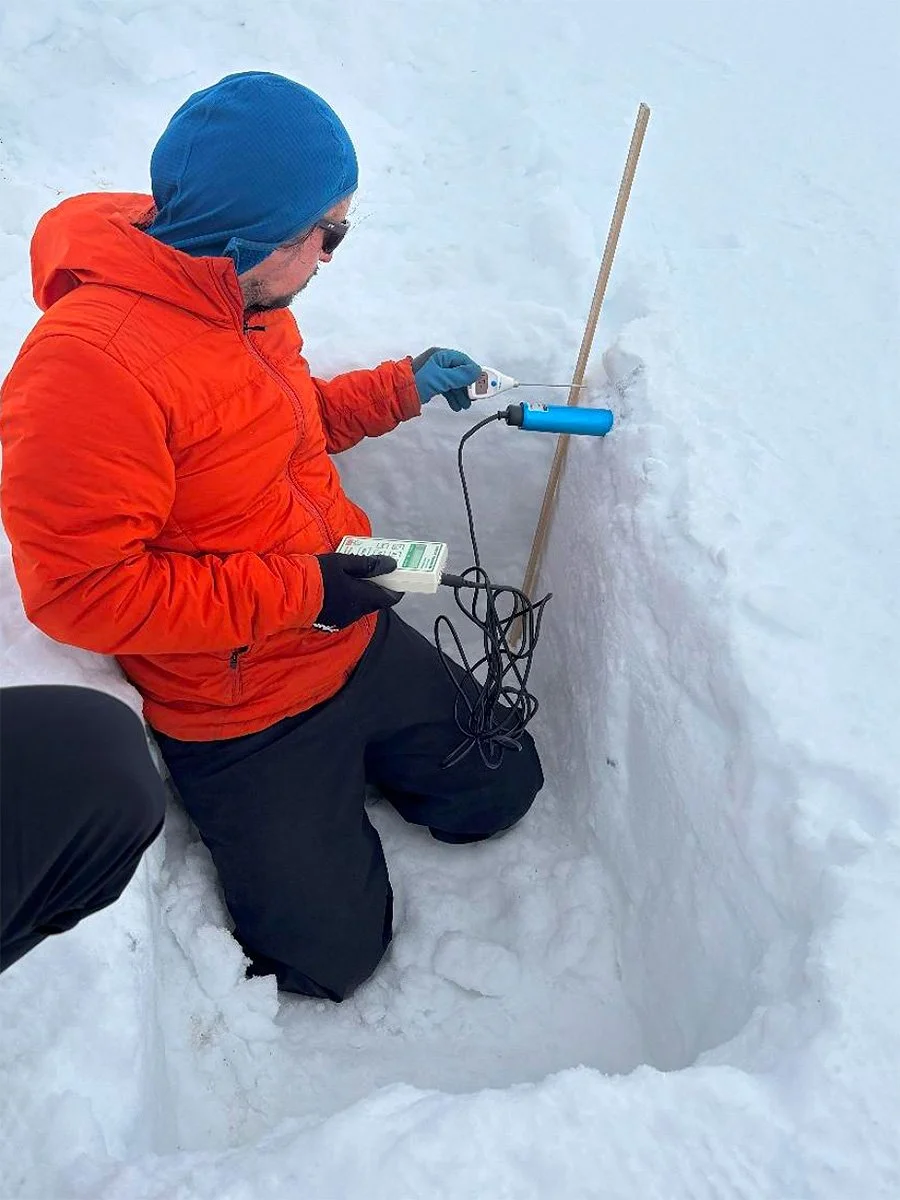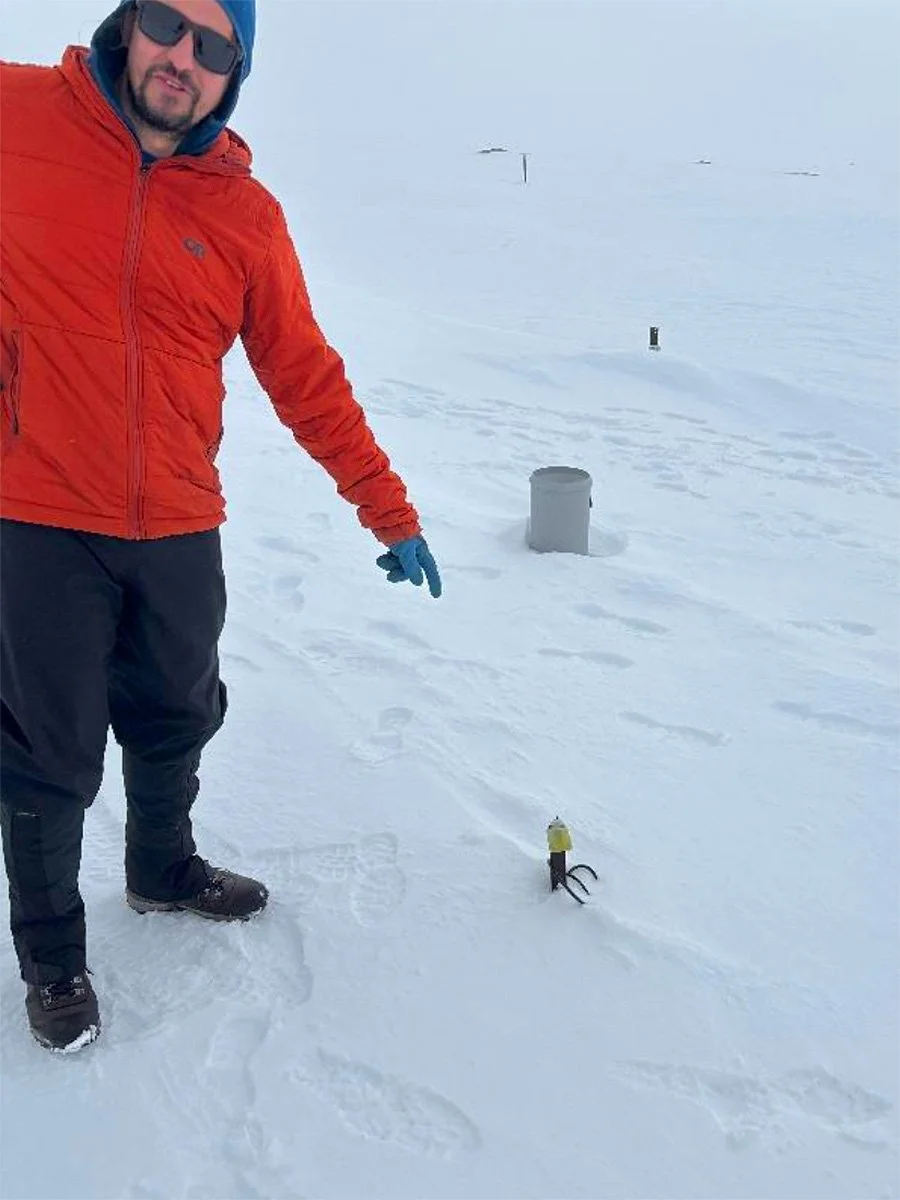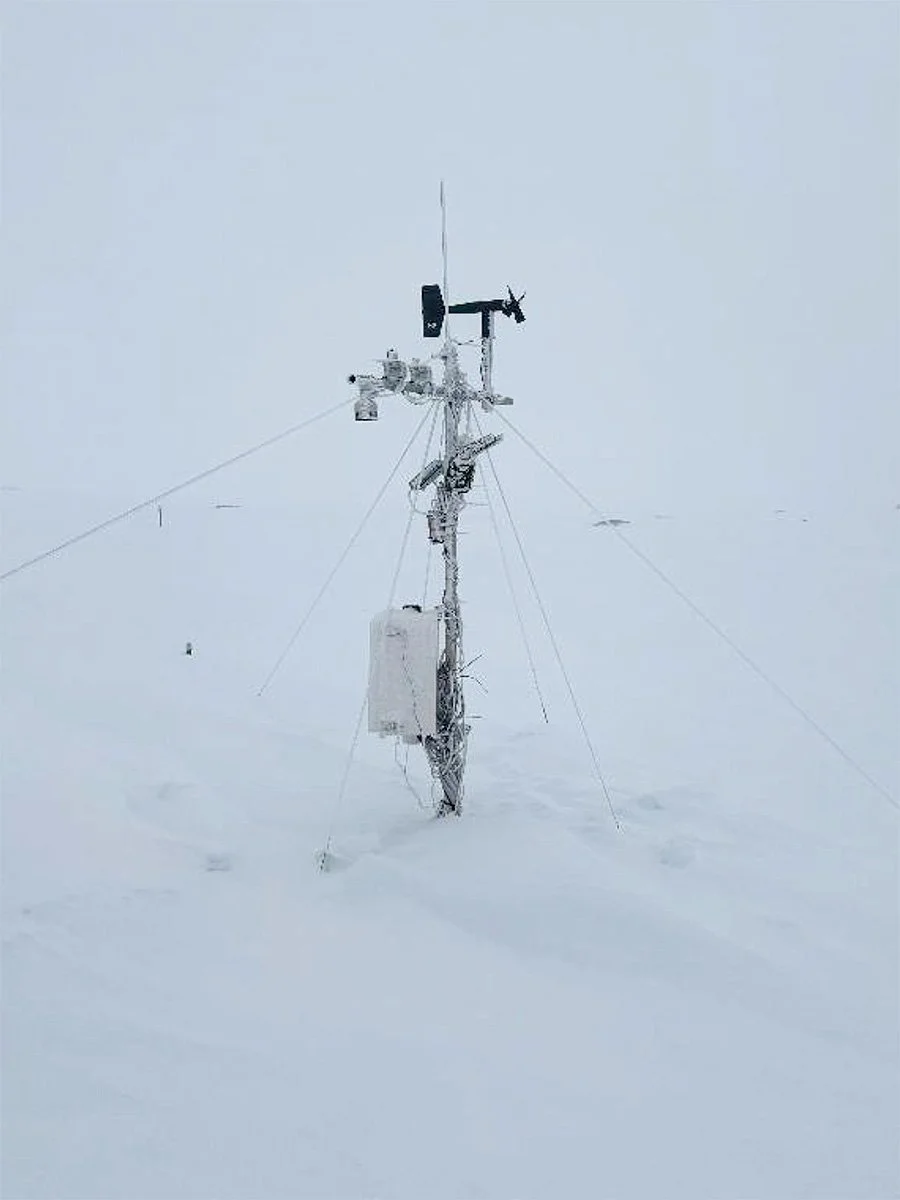On certain slopes in the winter backcountry you might come across a long, open crack in the snow that runs across the feature. These are called glide cracks. They form when the entire snowpack slowly glides downslope over the ground beneath it. Sometimes they linger all season and melt away in spring; other times, they release as a glide slab avalanche — a full-depth slide that can be very destructive. MSC has previously analysed large potential glide slab avalanches in the NSW Main Range.
Glide slab avalanches are challenging to predict. There’s no clear way to know whether they’ll fail suddenly or simply fade with warmer weather. Deepening our understanding of how liquid water moves through the snowpack is critical to furthering our knowledge of glide slabs.
Photo of glide crack courtesy of Avalanche Canada.
Photo of a glide slab avalanche courtesy of Avalanche Canada.
For the past couple winter seasons MSC has been partnering with a research group from the University of Canberra’s Centre for Applied Water Science. The MSC sends a forecaster to participate in their collection of data related to snow layering, liquid water content and spatial variability.
This past Thursday I joined Duanne White and his team for a field day at the AMRF (Australian Mountain Research Facility) Cruiser Plateau site, just north of Thredbo Resort. My goal was to assist in the day’s objectives, observe the data collection and consider the connection between the work of MSC and Duanne’s team’s research.
The research is multi-faceted with a relatively broad scope. They are interested in the journey water droplets take from falling from the sky as snow to melting and becoming the runoff that feeds rivers and streams.
A key aspect of this research is building a greater understanding of the environmental factors that result in liquid water percolation. Percolation is the process of liquid water seeping downward through the snowpack, moving between snow crystals and layers until it either refreezes or reaches the ground. This is one of the potential connections between the research, glide slabs and our work at MSC.
The data collection involves monitoring changes in the weather and snowpack using remote sensors and field observations of snow on the ground.
The snowpack height, density, snow water equivalent and liquid water content are measured using a blend of advanced instrumentation and snowpack observation techniques adopted from guidelines set by the Canadian Avalanche Association.
While the team’s research is not “avalanche research”, any new information related to how seasonal snow on the ground changes over time has a contribution to our understanding of avalanche formation and release. If we can anticipate when liquid water is likely to form in the snowpack and travel through to the base, we may be able to better forecast glide slab releases.
Glide slabs are more likely to avalanche when liquid water percolates through the snowpack and lubricates the interface between the slab and the smooth ground surface underneath. This can happen during substantial warming or rain events but as mentioned above, many glide slabs will simply melt out at the end of the season. The exact formula for how much rain or warming will result in each glide slab melting out versus avalanching is still uncertain to avalanche forecasters. The research conducted by Duanne and his team could help reduce this uncertainty.
While I’m not a researcher by trade, I spend my professional life observing, interpreting, and communicating what the snow is telling us. Days like this — working alongside Duanne and his team — are a reminder that the more perspectives we bring to snow science, the richer our understanding becomes. Their methods and objectives may differ from avalanche forecasting, but there’s always valuable overlap.
For MSC, keeping up with the latest research into snow, weather, and avalanches isn’t just interesting — it’s essential. It sharpens our forecasting, informs our public messaging, and ultimately helps keep people safer in the mountains. It also fulfils one of MSC’s key purposes as an association to promote scientific studies of mountain regions.
Tyson Rettie
MSC Forecaster






